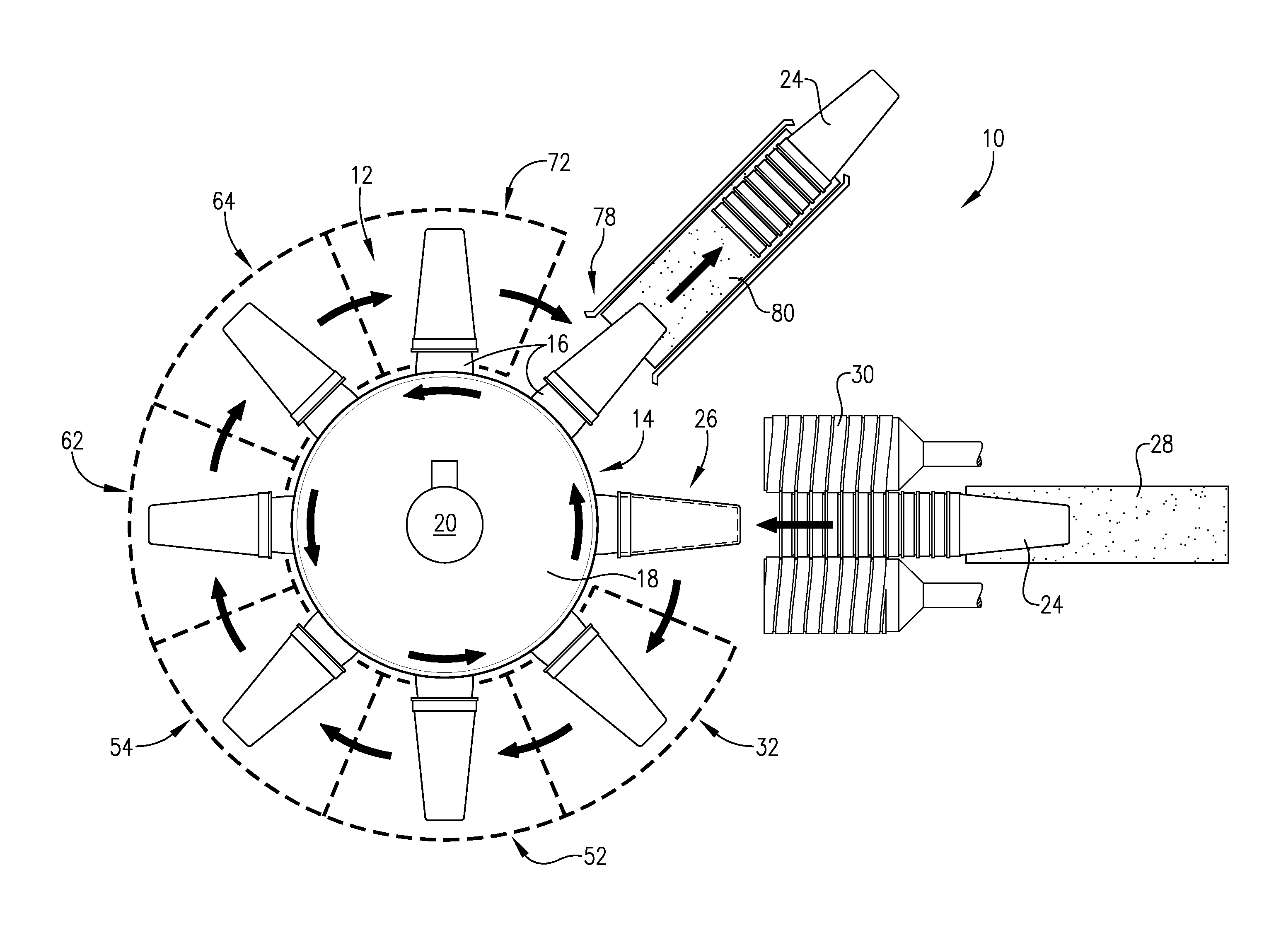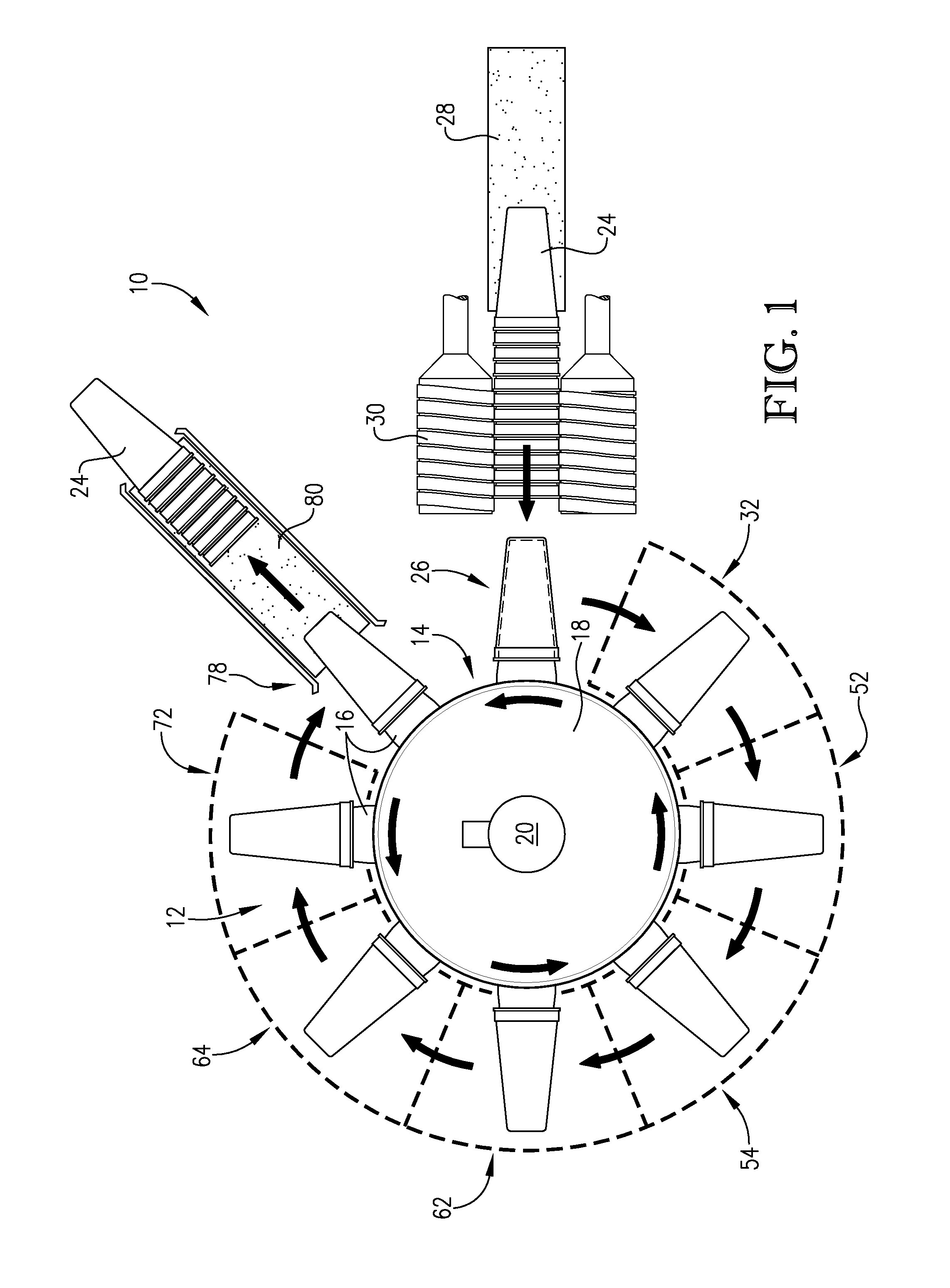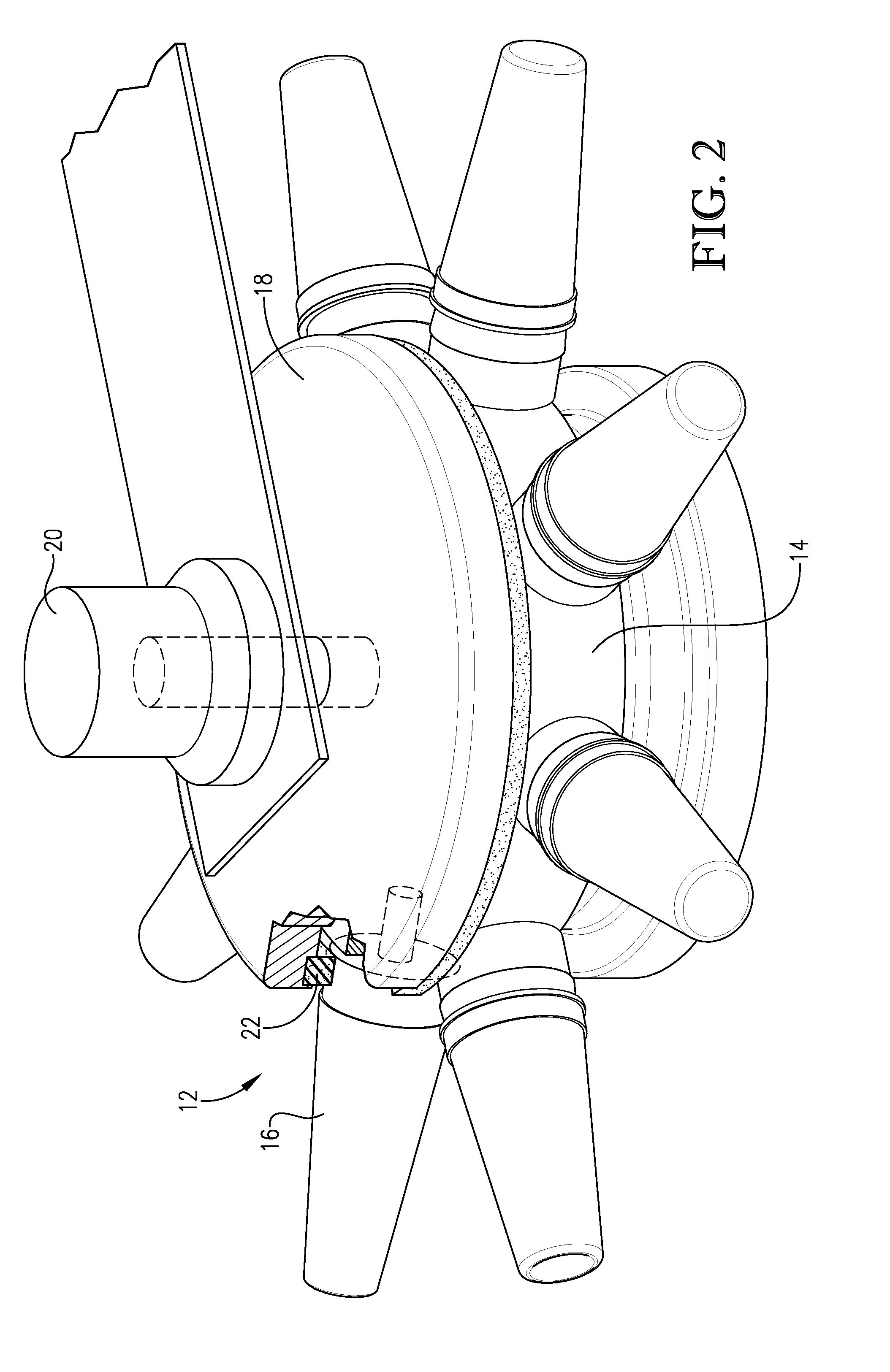Apparatus and method for de-inking printed surfaces
a technology of printed surfaces and apparatus, applied in the direction of printing, cleaning processes and apparatus, cleaning using liquids, etc., can solve the problems of high raw material cost, production of high levels of scrap materials, and printing operation to produce misprinted items or overruns in terms of product quantities, etc., to achieve the effect of reducing the production of scrap materials
- Summary
- Abstract
- Description
- Claims
- Application Information
AI Technical Summary
Benefits of technology
Problems solved by technology
Method used
Image
Examples
Embodiment Construction
[0022]The present invention provides methods and apparatus for removing ink from synthetic resin material surfaces, particularly ink printed upon a container surface, such as a cup, which will be used to illustrate the principles of the present invention. Although, it is within the scope of the invention for the methods and apparatus described herein to be adapted for use on other types of printed surfaces such as on synthetic resin material webs, sheets, and films, such as banner material and lids. Therefore, the following discussion should be taken as illustrative and not as limiting the scope of the present invention in any way. In certain embodiments, an ink image is printed upon the outer surface of a substantially cylindrical or frustoconical container. The container is formed from a synthetic resin material such as a polyolefin (e.g., polyethylene or polypropylene), biopolymers (e.g., plant-based materials including starch-containing plastics), or polyesters (e.g., polyethyle...
PUM
 Login to View More
Login to View More Abstract
Description
Claims
Application Information
 Login to View More
Login to View More - R&D
- Intellectual Property
- Life Sciences
- Materials
- Tech Scout
- Unparalleled Data Quality
- Higher Quality Content
- 60% Fewer Hallucinations
Browse by: Latest US Patents, China's latest patents, Technical Efficacy Thesaurus, Application Domain, Technology Topic, Popular Technical Reports.
© 2025 PatSnap. All rights reserved.Legal|Privacy policy|Modern Slavery Act Transparency Statement|Sitemap|About US| Contact US: help@patsnap.com



